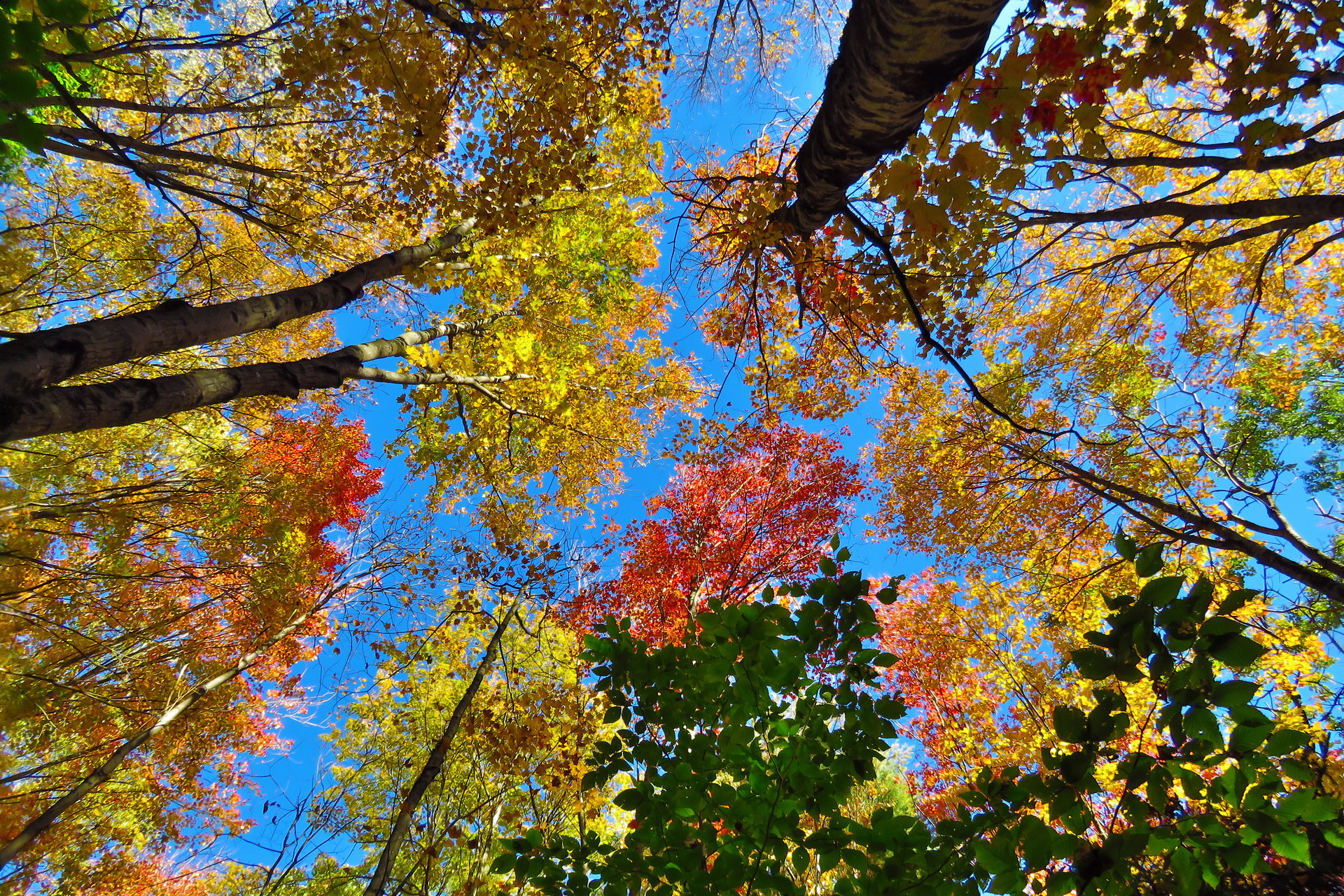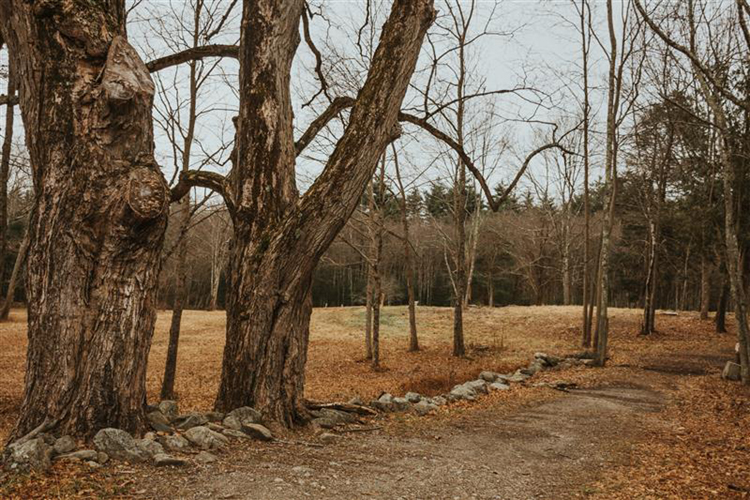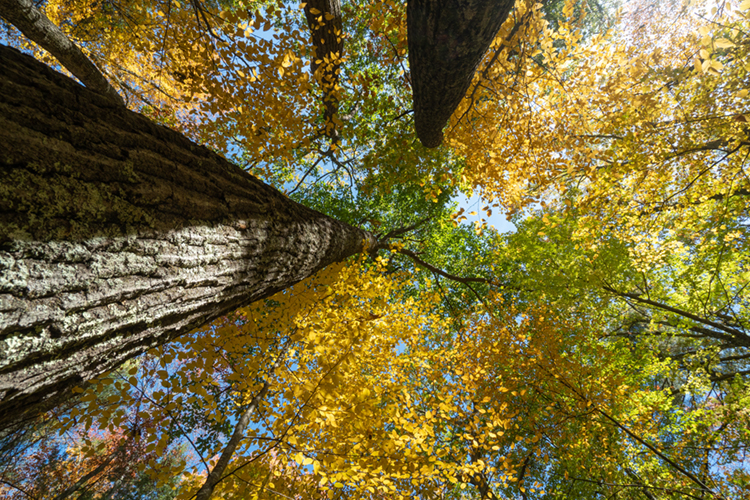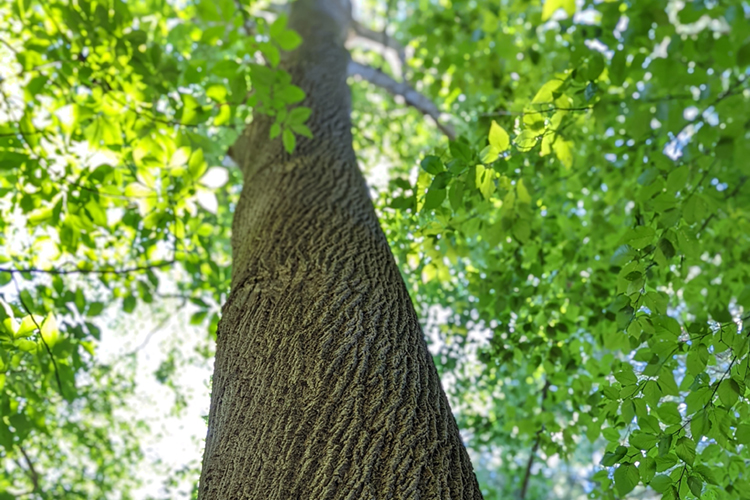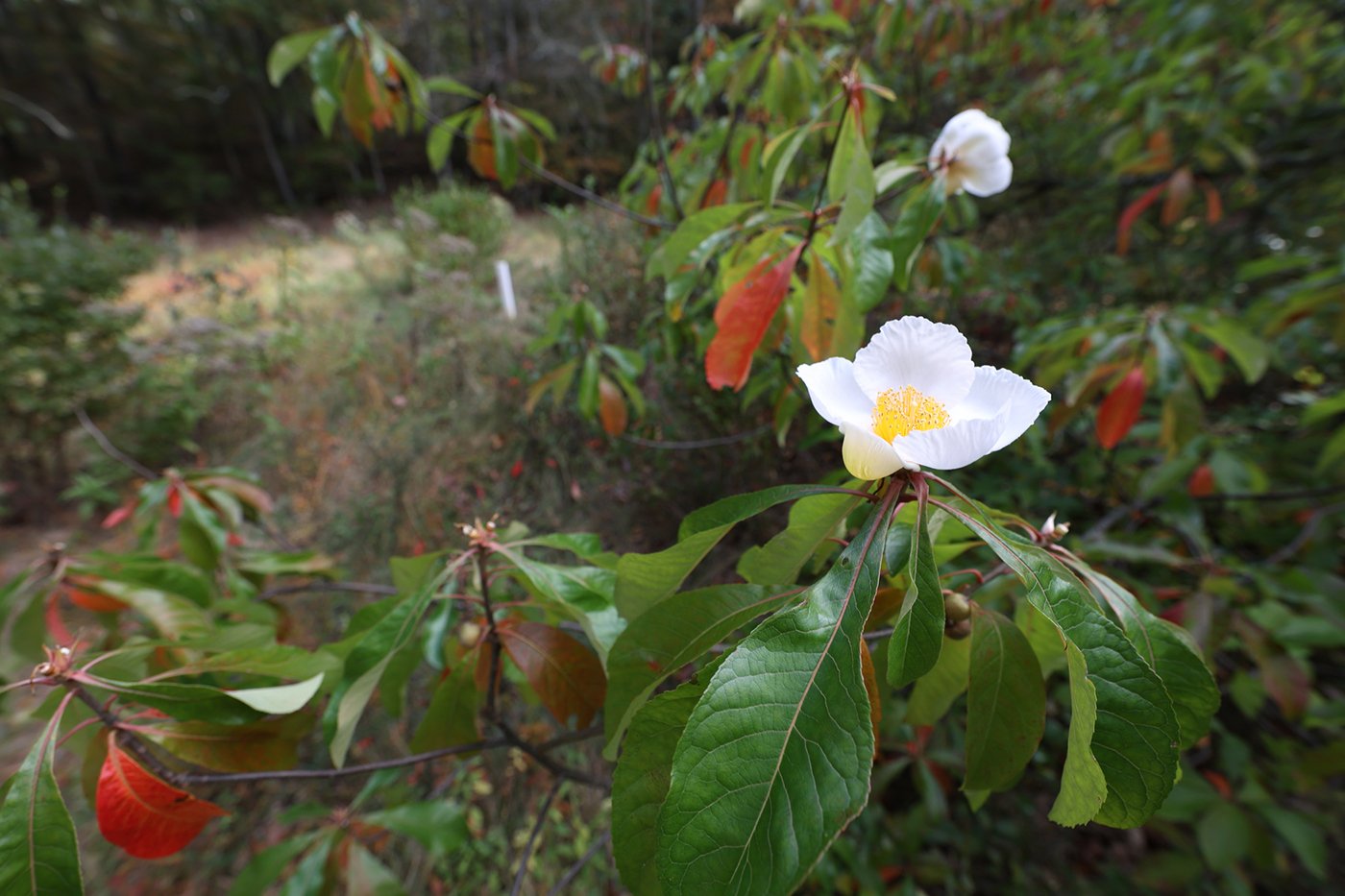The trees at our wildlife sanctuaries have experienced the different seasons for decades, centuries even. Each fall, they draw the gaze of visitors who marvel at the vibrant red, yellow, orange, and more subtle green hues in oak, maple, and beech forests. And while fall is no doubt glorious, our trees stand out throughout the year—some more than others thanks to their unique stories.
Discover some of these special trees and learn what Mass Audubon is doing to understand how climate change is impacting them.
Presidential Maples
If trees could talk, then George and Martha at Moose Hill in Sharon could tell eyewitness accounts of the Revolutionary War. These two massive sugar maples are named after the first president and first lady and are estimated to be around 265 years old. They’re both still used in Moose Hill’s maple sugaring operation today and are large enough to fit three sap buckets on each tree.
You’ll be greeted by George and Martha just a few feet off the Billings Loop Trail, in a clearing near Billings Barn. They stand side-by-side, but one of Martha’s branches was struck by lightning in 2021 and now rests on the ground.
A Big Oak in Worcester
Next to the babbling brook at Stop 9 on the All Persons Sensory Trail at Broad Meadow Brook in Worcester you’ll find Big Oak standing over 90 feet tall. The wrinkled bark on the white oak dates back 120 years and has survived land clearings, extreme weather, and a spongy moth infestation. Neighboring trees have been struck by lightning or blown over by the wind, but the sturdy Big Oak continues to grow.
The oak provides food and shelter for chipmunks, squirrels, and lots of other animals. Listen to Big Oak as it drops thousands of acorns and watch its lobed leaves drift gently to the ground below. After your time on the trail, stop in the Fargo Education Center to see the colorful tree mural painted after Big Oak.
The Iconic Tulip Tree
The Tulip Tree Trail at Arcadia in Easthampton and Northampton extends from the visitor center toward the Mill River and Arcadia Marsh, passing by the Art House through a grove that includes Eastern white pines, red and sugar maples, and an assortment of exotic trees planted in Arcadia’s past, including Chinese chestnut, Fraser fir, and Chinese holly. But where is the tulip tree?
It’s surprisingly easy to miss, given its size, tucked off the trail as it passes behind Arcadia’s maintenance garage area. Recently measured at nearly 124 feet tall and over 40 inches in diameter, this tree’s trunk rises like a column, its furrowed bark distinct from the nearby pines. In the spring and early summer, yellow flowers reminiscent of tulips sprout in the canopy, developing into conical clusters of fruits that release their winged seeds through the fall. Massachusetts is near the tulip tree’s current northern range limit, but climate change is actually helping them here, and seedlings are increasingly found in Arcadia’s forest understory.
A Mystery in Falmouth
Known as the Mystery Tree at Ashumet Holly in East Falmouth, the Franklinia tree was planted in the 1960s by previous landowner Wilfred Wheeler. Its nickname comes with a good reason—these trees mysteriously disappeared from the wild after being documented for the first time by John and William Bartram in Georgia in 1765. All current Franklinia trees are descendants of the seeds collected and propagated by these botanists.
To gaze for yourself at its large, white October bloom and bright yellow fall foliage, walk along the Wheeler Memorial Trail and look north of Grassy Pond about 75 feet. Follow signs for Franklinia to reach a marker for the Mystery Tree. Its limbs bend in all directions and are covered with smooth, oval leaves.
Monitoring our Trees
In order to preserve all our trees for the next generation of nature heroes, we need to understand the impacts of climate change. Ten Mass Audubon wildlife sanctuaries have adopted Harvard Forest’s Buds, Leaves, and Global Warming Project to monitor the growing season for trees and any changes year to year.
Each spring and autumn, school groups, volunteers, youth leaders, homeschool students, interns, and educators help collect data by measuring the growth of the buds and leaves of different tree species. By building a pool of long-term data on climate and on seasonal changes of trees, such as leaf budding and leaf dropping, we can identify specific changes in the growing timeline corresponding to climate change.
While most of the sanctuaries started collecting data in the spring of 2021, Drumlin Farm in Lincoln has been participating since 2011. Over those 11 years, the growing seasons of a sugar maple and black birch were measured. The data collected show a surprising result: despite an increasing period of frost-free days, buds on the monitored trees are tending to emerge later in the spring now than when monitoring began. The later emergence contributes to the overall shortening of their growing period because the length of the growing season depends on the timing of leaf drop as well as bud burst. Many questions emerge from this observation, and when combined with data from throughout the project’s network, we can begin to draw conclusions.
Long-term studies like the Buds, Leaves, and Global Warming Project are critical to understanding the changing trends for our trees and forests at Mass Audubon wildlife sanctuaries and across the state. Trends uncovered by these studies provide insight into a potential future, helping us anticipate how climate change may disrupt the function and structure of the region’s forested ecosystems and the wildlife living there.
Get involved by reaching out to a participating Mass Audubon wildlife sanctuary. You may be invited to partake in an educational program, or become a community science data volunteer, depending on the location.



